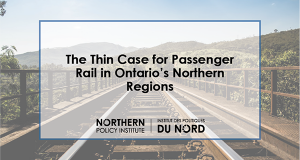Dear Brenda,
National Post columnist Chris Selley says he wants VIA Rail’s transcontinental train axed:
While I share some of Selley’s concerns, he misses key points that are vital to any debate about the train’s future.
When it was launched in 1955, The Canadian was the pride and joy of privately-owned Canadian Pacific (CP) and its future president and chairman, “Buck” Crump. When I interviewed him during his retirement years, Crump criticized himself for investing $40 million – the equivalent of nearly $400 million today – to buy the train. But he always quickly added that “his” Canadian had been one of North America’s finest and most popular long-haul trains … which it was.
Inaugurated on the same day in 1955 as the less-dazzling Super Continentalof competitor Canadian National (CN), the glittery, dome car-equipped Canadiang rabbed headlines and showed a small profit in its first years. It drew on three markets: Tourists making long-distance trips, intercity travellers on shorter trips and residents of isolated communities who lacked other travel options.
However, Crump said it burned his caboose to see public money being stuffed into the Trans-Canada Highway immediately adjacent to the route of his privately-funded trains. Not far away were publicly-owned airports built to prop up Crown-owned Trans-Canada Airlines (now Air Canada), which was the expensive plaything of Liberal “Minister of Everything” C.D. Howe.
The slender profitability of the CP and CN passenger trains evaporated. Howe’s shifting of the lucrative railway mail traffic to his airline was yet more enterprise denied at public cost.
VIA was created in 1977 to relieve the two railways of the red ink being generated by the remaining passenger trains, which were being bludgeoned by heavy public spending on every transportation mode – except trains. Politically hog tied from the outset, VIA won back lost passengers, but at high cost due to its lack of modernization. The Trudeau government that had created VIA then knocked off a fifth of its trains in 1981.
On the 1984 campaign trail, the Mulroney Conservatives said they’d put it all back, promising to “create a public excitement about going by train.” But heavily influenced by vested interests, including bus line owner Paul Martin, they ignored their own Rail Passenger Action Force’s warning: “We know of no other way to stop the drain of government funds to VIA than to modernize the corporation; in fact, the only alternative is to scrap it completely.”
After reinstating several trains cut by the Liberals, the Tories rejected the recommendation that new, Canadian-built high-performance equipment be bought to drastically cut VIA’s subsidy. Instead, half of the system was hacked away in 1990, including VIA’s Canadian on the CP route. It was ham-handedly combined with the former CN Super Continental and reduced from daily to tri-weekly and then to bi-weekly service for all but a few summer months. The original CP equipment was beautifully restored as a luxury train with some lower-cost coach seats thrown in for those unable to afford the upscale accommodations.
Today, VIA’s Canadian really only serves a high-end market. It is bitterly resented by those who can’t afford its high fares and can’t make use of its erratic and unreliable schedule. Who could blame them? Their tax dollars are shoring up a service that’s beyond their reach. But at a time when residents of northern Ontario and the Prairies have lost bus service and have few or no air options, cost-effective rail passenger service is required more than ever.
VIA’s publicly-funded U.S. equivalent, Amtrak, provides the answer. Despite unsuccessful attempts by some politicians to dismantle it, Amtrak operates several trains on long-haul routes similar to the Canadian’s. They use the double-deck equipment the Mulroney government rejected for VIA – some of it built by Bombardier in the 1990s.
As a result, Amtrak’s daily Chicago-Seattle/Portland Empire Builder– named for Ontario-born railway baron James J. Hill, “the Empire Builder of the Pacific Northwest” – offfers more than three times the service and carries five times more passengers than VIA’s Canadian. The Empire Builder’sper-passenger subsidy is one-third of the Canadian.
Public transportation is vital to the economic, social and environmental health of any nation. Those nations with which Canada competes all have modern and efficient rail passenger systems. A failure to re-envision, re-equip and re-staff VIA will only make Canada less mobile, accessible and attractive to investors. Investing public funds in rebuilding it – including the flagship Canadian– would pay back three times its investment in economic spinoff and job creation.
Any recommendation that VIA’s Canadian and its other trains be euthanized is simplistic and just plain wrong. The equation I put at the top of all my consulting reports is simple and clear:
Mobility + Access = Destiny.
Greg Gormick is a nationally-known rail analyst and policy adviser, whose clients have included VIA, CP and CN, and elected officials of four political parties. He is the author of the forthcoming book, Railroaded: The Life and Near-Death of Canada’s Passenger Trains.
- A Northlander Fix or Fixation? Part 1 - May 5, 2022
- A Northlander Fix or Fixation? Part 2 - May 5, 2022
- The ACR’s Future – Sale or Abandonment? - January 16, 2021
 Wawa-news.com You can't hear the 'big picture'!
Wawa-news.com You can't hear the 'big picture'!


Now that the former government-owned CN is cooperating with CP, what if Garneau took a giant leap to fix the problem VIA Rail Canada has been forced to endure since 1990?
When the decision was made in smoked filled rooms in Ottawa, Montreal, and Calgary to force VIA’s “The Canadian” off of its traditional CP route that directly served Calgary, the Rockies at Banff and Lake Louise, as well as the major populations between Toronto-Vancouver on a daily basis, the end result was to incur significantly higher losses.
This was only compounded by a reduction in frequency to but twice per week during most of the year. CN’s conversion to PSR only further exacerbated financial losses due to seriously delayed trains. The utility of “The Canadian” to serve the local population was eliminated with this route and schedule changes; thus, converting this train into an overseas tourist attraction.
As “The Canadian” would not compete with the “Rocky Mountaineer” serving the Rockies from Vancouver, why is not feasible for VIA to directly serve the Rockies and major population centers again? Until 1961, three different railroads competed to serve Yellowstone National Park from Chicago and Seattle. The privately-owned Rocky Mountaineer secured its non-compete position at the expense of the Crown Corp VIA-and the traveling public.